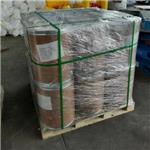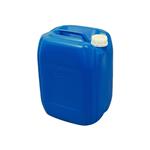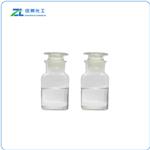Chemical Properties
Hexadecyldimethylamine is Liquid/Solid
Uses
Barlene(R) tertiary amines are used as chemical intermediates for the manufacture of quaternary ammonium compounds, amine oxide and betaine surfactants
Uses
N,N-Dimethylhexadecylamine may be employed in the following studies:
- As pore size mediator for the synthesis of monodispersed mesoporous silica nanoparticles.
- As swelling agent in the fabrication of colloidal mesoporous silica nanoparticles of a tunable mesopore size.
- Preparation of 1,4-bis(N-hexadecyl-N,N-dimethylammonium)butane dibromide, Gemini surfactant.
General Description
Hexadecyldimethylamine is a clear yellow colored liquid with a fishlike odor. Insoluble in water and less dense than water. Hence floats on water. Contact may irritate skin, eyes and mucous membranes. May be toxic by ingestion, inhalation or skin absorption. Used to make other chemicals.
Air & Water Reactions
Insoluble in water.
Reactivity Profile
Hexadecyldimethylamine neutralizes acids in exothermic reactions to form salts plus water. May be incompatible with isocyanates, halogenated organics, peroxides, phenols (acidic), epoxides, anhydrides, and acid halides. Flammable gaseous hydrogen may be generated in combination with strong reducing agents, such as hydrides.
Health Hazard
TOXIC; inhalation, ingestion or skin contact with material may cause severe injury or death. Contact with molten substance may cause severe burns to skin and eyes. Avoid any skin contact. Effects of contact or inhalation may be delayed. Fire may produce irritating, corrosive and/or toxic gases. Runoff from fire control or dilution water may be corrosive and/or toxic and cause pollution.
Fire Hazard
Combustible material: may burn but does not ignite readily. When heated, vapors may form explosive mixtures with air: indoors, outdoors and sewers explosion hazards. Contact with metals may evolve flammable hydrogen gas. Containers may explode when heated. Runoff may pollute waterways. Substance may be transported in a molten form.






